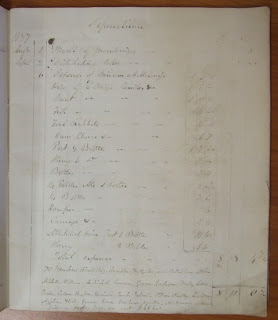The Lecturers Club Book. Archive Item of the Month, June 2010
In an earlier post I described the system of medical education in the early part of the nineteenth century. The number of competing schools offering medical courses created problems in ensuring that high standards were maintained. Throughout his professional career, Sir Dominic Corrigan was to be actively involved in the campaign to reform and standardise medical education, and his importance in the medical profession from the 1850s onwards meant that his ideas and suggestions were listened to. The Lecturers Club Book shows that as early as 1837 he was already taking steps to improve the provision of medical education in Ireland.
The Lecturers Club Book is a small, slightly battered, notebook containing the minutes and accounts of a short lived club established by Corrigan and his contemporaries. The first resolution in the notebook states that 'the present rate of remuneration is totally inadequate in order to enable us to meet the expenses incurred in preparation and requisites for courses or lectures such as the present state of medical science and the character of the Irish medical school require, we therefore feel it is necessary to raise the fee for each first course of lectures to three guineas'. Although the lecturers might see the advantage in a fixed rate of pay for themselves, the free and competitive market for medical education in Dublin made the Park Street School think otherwise. They undercut the lecturers club and advertised lectures at only two guineas.
The attempt to regulate the cost of medical lectures failed, but the men who had made the attempt continued to meet as the Lecturers Club. This was to be a social medical club, with the objective to 'keep up a spirit of good feeling and friendship amongst the lecturers which will enable them more readily to act in concert for their mutual support and the advancement of their profession'. The club book contains a list of its members, giving their names, addresses, subject taught and medical school. This list shows that many of the leading medics of the Dublin school were involved in the club, including William Stokes, Robert Graves and Philip Crampton. Eoin O'Brien, the first historians to make use of the Corrigan papers, provided a complete list of the members of the club as an appendix to his biography on Corrigan. The whole biography,
Conscience and Conflict. Sir Dominic Corrigan 1802-1880 can be downloaded, free of charge, from his
website.

Images show front cover, list of members and accounts for September 1837 all from the Lecturers Club Book (DC/2/5/3)